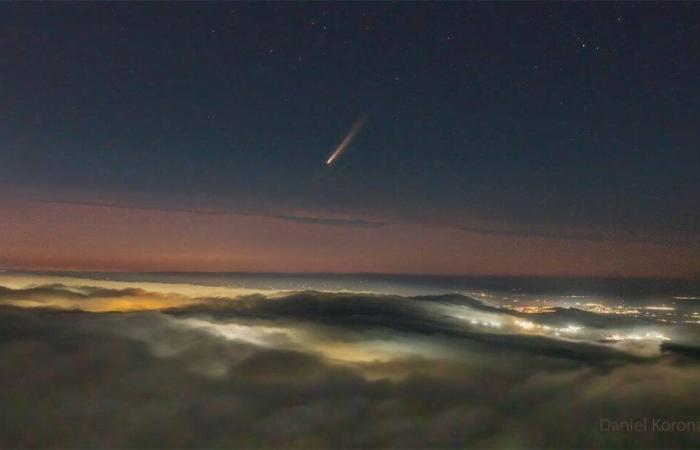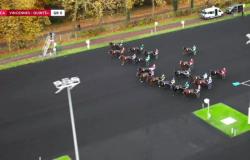
After the Northern Lights, the phenomena observable in the sky continue.
Comet Tsuchinshan-ATLAS should be visible in the northern hemisphere, therefore here, from this Sunday, October 13.
Mark your calendars: it should be visible just after sunset every evening until the end of next week, or even, if we’re lucky, until the beginning of November.
Open your peepers!
Until now, you had to be in the Southern Hemisphere to hope to see it with the naked eye. Friday around 5:00 p.m. Paris time, it will have crossed as close as possible to the Sun, before returning close to the Earth.
And if the weather is right “it will catch your eye” every evening watching “in the direction of the setting sun”, according to Lucie Maquet, astronomer at the Institute of Celestial Mechanics and Ephemeris Calculation (IMCCE), located within the Paris-PSL Observatory.
For Nicolas Bivier, astronomer at the Paris Observatory, “If the weather is good and you’re somewhere in the mountains with a clear view to the west, you might be able to see it.”assures this comet specialist.
But all this, on the condition of having survived its passage near the Sun. Because when comets approach our star, the ice contained in their core sublimates and lets out a long trail of dust, reflecting the solar light. This is how she risks her skin despite everything, this Friday, she will spend as close as possible.
“It’s going to be a bright comet, that’s for sure.”
The small body of rock and ice was detected in January 2023 by China’s Purple Mountain Observatory (Tsuchinshan), giving it the first half of its name.
He owes the second to the confirmation of his existence by a telescope from the South African ATLAS program.
Since then, for astronomers, who like more rigorous nomenclatures, C/2023 A3 continues its journey towards the Sun.
The study of its course is too short, “barely a year behind us”, to know precisely the path she has followed until now, Lucie Maquet explains to AFP.
And to give you the best chance of seeing it, the French astronomy society has developed a map so that you can find your way in the sky. It can be viewed here.





